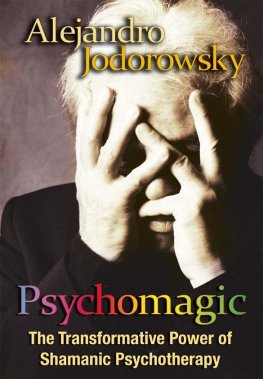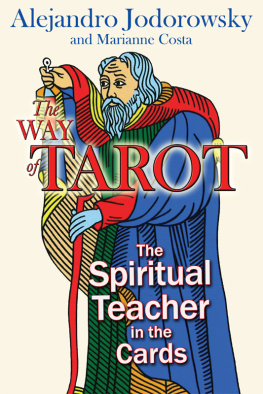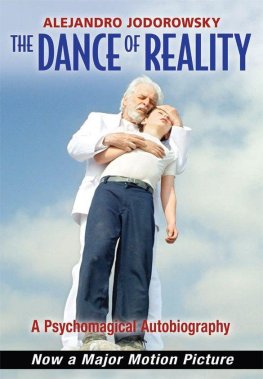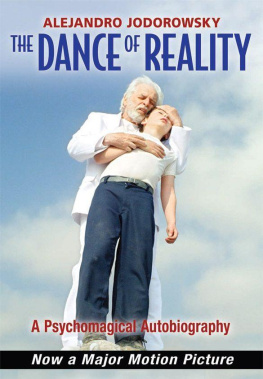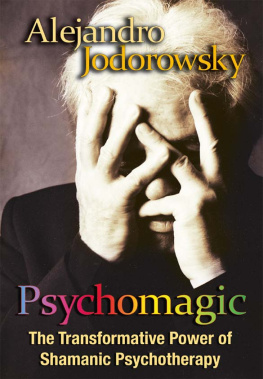Alejandro Jodorowsky
Psychomagic: The Transformative Power of Shamanic Psychotherapy
Having lived many years in Mexico City, I had the opportunity to study the methods of those called witches or folk healers. They are legion. Every neighborhood has one. Rising up in the heart of the city is the great Sonora market, which sells exclusively magic products: colored candles, dissected fish shaped like the devil, images of saints, medicinal plants, blessed soaps, tarots, charms, plaster sculptures of the Virgin of Guadalupe turned into skeletons, and so on. In some back rooms, plunged in semidarkness, women, each with a triangle painted on her forehead, rub bunches of herbs and holy water on those who come for consultations; they practice cleansing the body and the aura. . Professional doctors, being faithful sons of the university, despise these practices. According to them, medicine is a science. They would like to find a precise, ideal remedy for every illness, with each treatment distinct from all others. They want medicine to be one official method, with no variations, to be applied to patients who are treated only as bodies. None of them proposes to cure the soul. To folk healers, on the other hand, medicine is an art.
It is easier for the unconscious to understand dream language than rational language. From a certain point of view, illnesses are dreams, messages that reveal unresolved problems. Folk healers develop personal techniques with great creativity: ceremonies, spells, strange medicines such as caf au lait laxatives, rusty screw infusions, mashed potato sanitary napkins, animal excrement tablets, or moth eggs. Some have more imagination or talent than others, but all, if consulted with faith, are useful. They speak to the primitive and superstitious individual, whom we all carry inside.
Watching these popular therapists operate, often performing miracles using the honorable tricks of a skilled magician, I came up with the notion of the sacred trap. For the extraordinary to occur, it is necessary for the sick to firmly believe in the possibility of a cure and to accept the existence of miracles. To be successful, the healer is forced to employ tricks during the first meetings, which convince her clients that material reality obeys that of the spirit. Once the sacred trap tricks the person seeking consultation, he experiences an interior transformation that permits him to capture the world by way of the intuition rather than by reason. This is the only way that a true miracle can take place.
But I ask myself: without the sacred trap of this artistic therapy, could a person without faith be cured? On the other hand, although the rational mind guides each individual, can we say that anyone lacks faith? At every moment, the capacity of the unconscious exceeds the limits of our reason, whether by way of dreams or by involuntarily acts. With that in mind, shouldnt there be a way to make the unconscious behave voluntarily, like an ally?
One incident that occurred in one of my psychogenealogy courses gave me an idea: When I described the causes of neurosis, a medical student suddenly fell on the floor twisting with painful spasms. It seemed like an epileptic seizure. Amid general panic, without anyone knowing how to help him, I went over to the afflicted student and without knowing why and with a great deal of trouble I removed his wedding band from the ring finger of his left hand. Immediately, he calmed down. I realized that the objects that surround and accompany us form part of the language of the unconscious. In this way, putting a ring on a person can imprison him, while taking the ring away can relieve him. .
Another experience, which had very revealing results: When my son Adan was six months old, he was ill with a very bad case of bronchitis. A doctor friend of mine, an herbalist, prescribed drops of essential oils. My ex-wife Valrie, Adans mother, was to pour thirty drops into his mouth three times a day. She quickly complained that the boy was not getting better.
I told her, The problem is you dont believe in the remedy. What religion were you brought up in?
Like every Mexican Catholic!
Then we are going to incorporate faith into these drops. Each time you administer them, say an Our Father.
So thats how Valrie did it, and Adan recovered quickly.
After that, I began very prudently to incorporate this method in my tarot readings. When a client asked me how to solve a problem, I would prescribe what I called Psychomagic. Why didnt I just call it magic?
For a primitive therapy to function, the witch doctor, supported by the spiritual superstitions of the patient, must maintain a mystery, present himself as the possessor of superhuman powers obtained through a secret initiation and relying on divine and supernatural allies to bring about a cure. The remedies they provide are mysterious to their clients, and the actions they recommend are intended to be performed without knowing why. In Psychomagic, to the contrary, we need the individuals understanding instead of his superstitious beliefs. The patient should know the reason for each of his actions. The psychomagician makes the transition from witch doctor to adviser. Using psychomagic prescriptions, the patient becomes his own healer.
This therapy did not come to me as a sudden illumination but was perfected, step-by-step, over the course of many years. In the beginning, it seemed very extravagant, so scarcely scientific that I could only experiment with friends and relatives. From time to time, in my conference in Paris, I made references to it. Once, I was invited to the study center founded by the spiritual teacher Arnaud Desjardins. He had learned of my experimentations and asked if I could resolve an illness his mother-in-law suffered: eczema on the palms of her hands. When the lady showed me her affected hands, I thought she made a request-like gesture, as if she felt excluded by her daughters marriage. I asked that Desjardins and his wife, in front of the patient, spit abundantly over a mound of green clay and then apply the resulting paste over the eczema. The trouble disappeared quickly.
Gilles Farcet, a young disciple of Desjardins, came to see me on the advice of his mentor. Using the pretext of an interview, he wished to familiarize himself with my strange theories. Based on our encounter, I developed a brief biography entitled La Trampa Sagrada [The Sacred Trickster], which consisted of a large number of readings. Gilles suggested that I develop my ideas more extensively. At the same time, wanting to confirm the effects of my treatments, he requested a psycho-magic session to help him become a profoundly spiritual writer. I suggested that he write a book of interviews with me that would be called Psychomagic, subtitled Sketches of a Panic Therapy. My young friend was dubious: not knowing the theme at all, he felt incapable of providing me with interesting questions.
Thats exactly why Im suggesting this. The bird of the spirit must liberate itself from the rational cage. So we will reverse the logical order. Instead of you asking me questions and I answering, first I will respond to you and then you will ask me. . This is to say, the effect will come before the cause.
And that is exactly what we did: Farcet sat down in front of me with a recorder, and I went along giving responses to nonexistent questions for the next ten hours. There were moments when my young interviewer slept anchored to his machine. Gilles then divided this material into organized sections with questions for headings. Since he was going deep into unknown territory (he had told me, I dont know if the artistic path and the therapeutic path can be reconciled), he wrote in an objective tone declaring: I am not one of the faithful. I do not write this book as an apprentice but as a friend. At times, a healthy perplexity opposes words, which, by happy effect, forces one to be specific about his thoughts.

